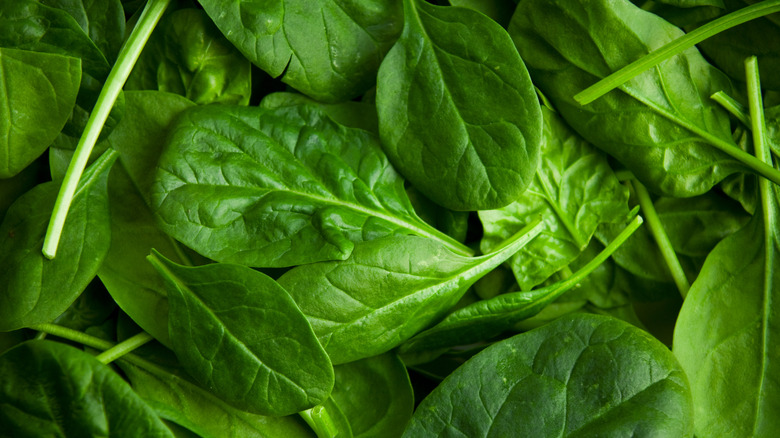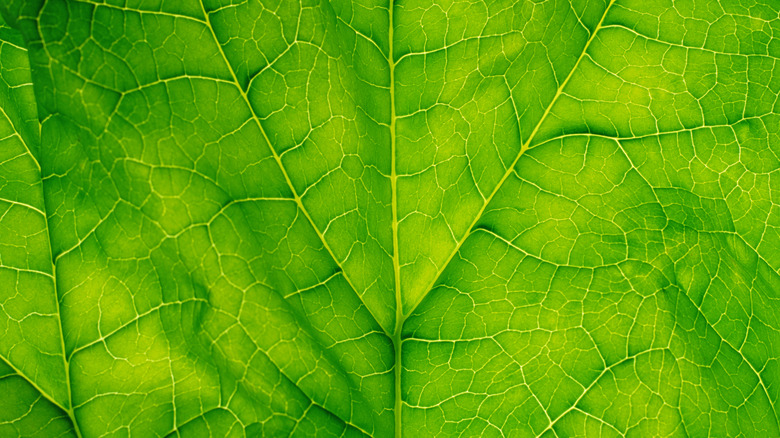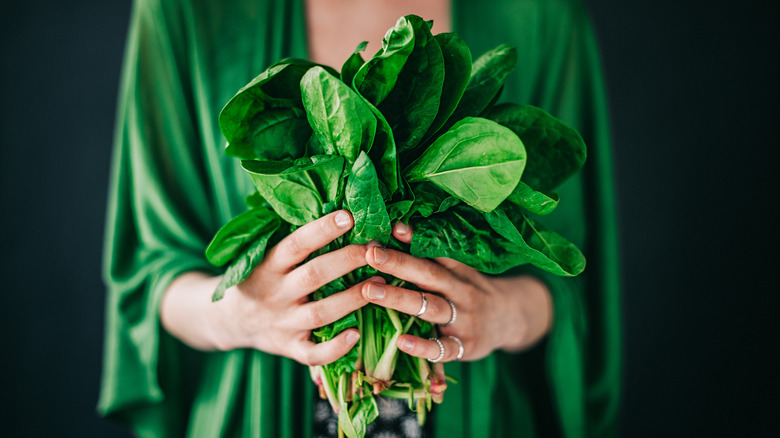Why Your Spinach Is Slimy (And How To Prevent It)
Spinach is delicious and delicate — and it's the latter quality that can quickly transform this vegetable from the featured ingredient for ultimate creamed spinach to, well, compost. Leafy greens need to be stored properly to get the most out of their brief vegetal lives, and spinach is very much not an exception — especially because it can get so slimy in such a short time. The tl;dr reason for this is excess moisture.
It's not always obvious to know how different foods need to be stored to ensure their optimal shelf life. You're probably storing most of your groceries incorrectly through no fault of your own because it's a bit of an acquired knowledge. The trick to keeping produce fresh is often either the retention or prevention of water. For example, fruits such as cucumbers like their high water content, but leafy greens such as spinach can suffer from excess moisture.
Water is the enemy of leafy greens
The water content in a leaf of spinach is high and its cellulose structure is delicate. This combination makes for delectable tenderness in wilted spinach but can lead to the degradation of raw plant matter. Spinach sheds its leafy water, which then festers on the surface of the tender leaves, basically creating spinach zombie water rot. Decomposing spinach leaves can harbor bacteria like E. coli and sometimes listeria. This isn't just gross; it can be harmful if ingested, according to the CDC.
It's important to inspect your spinach leaves before using them, and it's usually obvious when they're no longer edible. Unless you have a powerful constitution (and an even stronger stomach) you'll probably be reflexively averse to eating slimy compostable spinach — the algae-garbage smell alone should put you right off. Luckily, there are ways to extend the life of your spinach, namely controlling the moisture; you can do this best with paper towels. Simply wash your spinach after purchasing and dry the leaves thoroughly (if you have a salad spinner, this part will be even easier). Wrap the spinach leaves in a paper towel and store them in your crisper for a longer, happier leafy life.
Wilting vs rotting
It's important to note that there is a distinct difference between rotting and wilting spinach. Sometimes if your spinach is limp and tired-looking, it can be revived by letting it soak in ice water for a little while. Once it's reached the slimy point of no return, though, you'd better toss it in the trash, or if you have a composter — in it goes.
Be sure to store your spinach away from other fruits and vegetables that emit ethylene gas, like tomatoes or apples; proximity to them is guaranteed to rapidly rot your spinach. You should also know that baby spinach wilts much more quickly than mature spinach; because its structure is much more delicate than the mature variety, it will become slime in a matter of days without proper storage. If you find that you haven't used up your spinach promptly you can always freeze it, as it'll last for up to 14 months in the freezer. The bottom line for spinach: Keep it dry, keep it cool, and keep it away from everyone else in the fridge.


